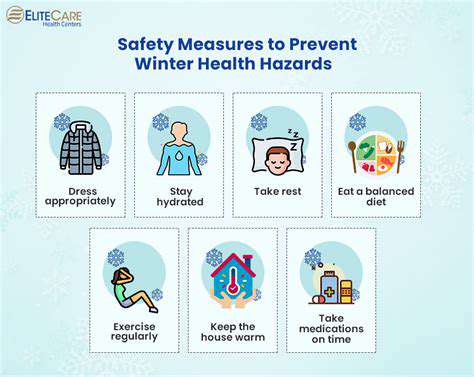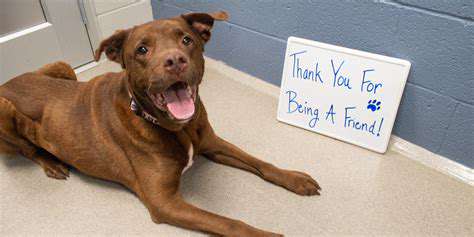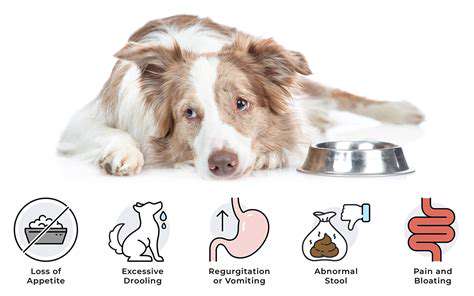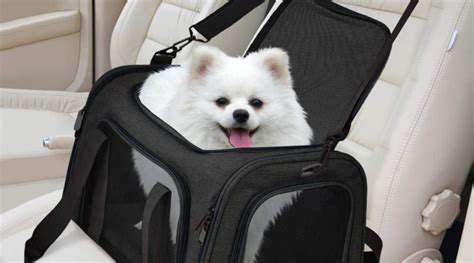Understanding Pet Anxiety During Winter Storms
Preparing Your Home for Potential Disruptions
Assessing Potential Disruptions
Preparing your home for potential disruptions, particularly during winter, is crucial for mitigating pet anxiety. This involves a thorough assessment of elements that could trigger stress in your furry friend. Consider factors like extreme cold, changes in light exposure, and unusual noises. A winter storm, for example, can bring significant disruptions to a pet's routine, causing anxiety from the change in the environment and lack of familiar sounds. Recognizing these potential stressors allows you to implement proactive measures to minimize their impact.
Think about your pet's typical response to changes in weather patterns. Do they tend to huddle more, become restless, or exhibit other behavioral changes? Understanding their individual sensitivities will help you tailor your preparations to their specific needs. By carefully observing their reactions, you can anticipate potential triggers and develop strategies to help them feel secure and comfortable during any disruptions.
Creating a Safe and Comfortable Space
A crucial aspect of preparing your home for potential disruptions is creating a safe and comfortable space for your pet. This involves designating a specific area where your pet can retreat when feeling anxious or overwhelmed. Ensure this space is well-stocked with familiar items, like their favorite toys, bedding, and food and water bowls. This familiar environment provides a sense of security and comfort, reducing stress during periods of change or disruption.
Consider the temperature of the designated space, ensuring it's warm and cozy during cold weather. Providing blankets, heated pads, or other warming options can make a significant difference in your pet's comfort level. This dedicated space should also be easily accessible for your pet, allowing them to seek refuge whenever they need it. The more comfortable and familiar the space, the less likely your pet will feel anxious during disruptions.
Having a consistent routine can also help your pet feel more secure. Establish a predictable feeding schedule, playtime, and bedtime routine, which can lessen the impact of unexpected occurrences. This consistency in their daily life can help them better manage disruptions.
Addressing Specific Winter Disruptions
Winter brings unique disruptions that can impact your pet's well-being. These include extreme cold, changes in light exposure, and unusual noises from the weather. To prepare, consider providing extra layers of warmth, like sweaters or blankets, to keep your pet insulated during cold snaps. This is especially crucial for breeds that are more prone to cold weather sensitivity, such as short-haired dogs and cats.
To combat the effects of reduced daylight hours, consider using supplemental lighting to maintain a more consistent light cycle. This can help regulate your pet's sleep-wake cycle, which is often disrupted by changes in weather patterns. Familiarize your pet with the sounds of winter weather such as snow or wind to reduce anxiety about unexpected noises.
Also, ensure your pet has access to fresh water at all times. Frozen pipes can disrupt water access, so be vigilant about checking for potential issues and taking steps to prevent them. This proactive approach can help minimize stress during winter disruptions and maintain your pet's overall well-being.

Read more about Understanding Pet Anxiety During Winter Storms
Hot Recommendations
- Customized Sleep Schedules: AI Driven for Sustainable Rest
- Crafting a Personalized Productivity Plan for Mental Clarity
- Sustainable Self Compassion: Cultivating Kindness Towards Your Mind
- Sustainable Productivity Hacks for the Busy Professional
- Sustainable Wellness for Parents: Balancing Family and Self Care
- Data Informed Self Care: Designing Your Personalized Wellness Strategy
- Sustainable Wellness for a Purpose Driven Life
- AI Assisted Mindfulness: Personalized Meditations for Deeper Practice
- Building Inclusive Mental Health Services: Key Initiatives
- AI Powered Self Care: Customizing Your Routine for Maximum Impact











